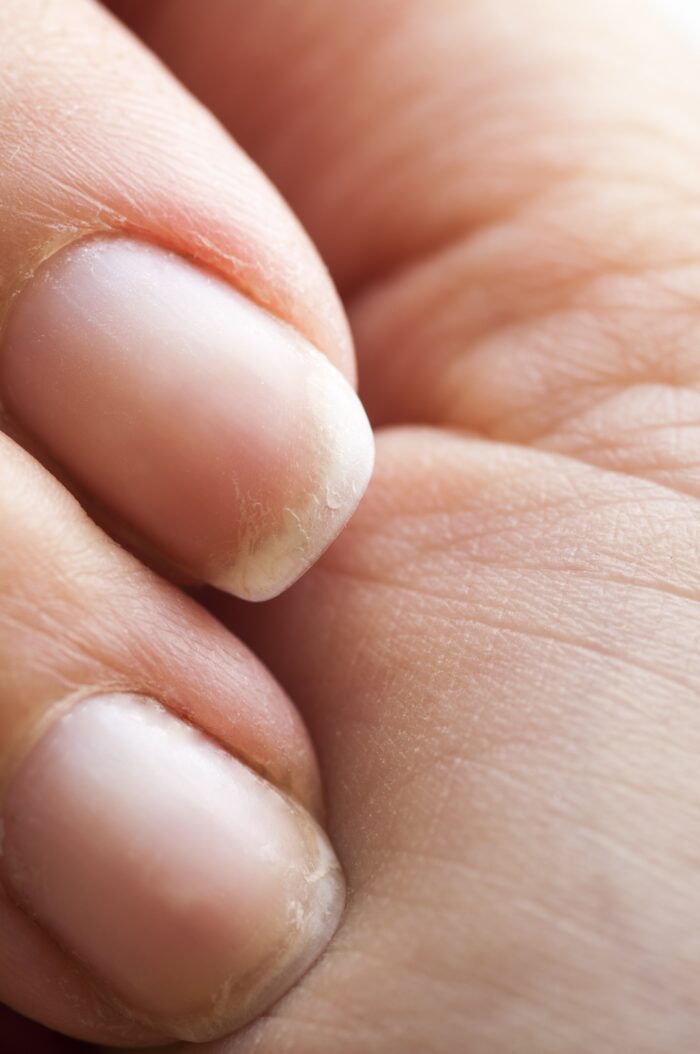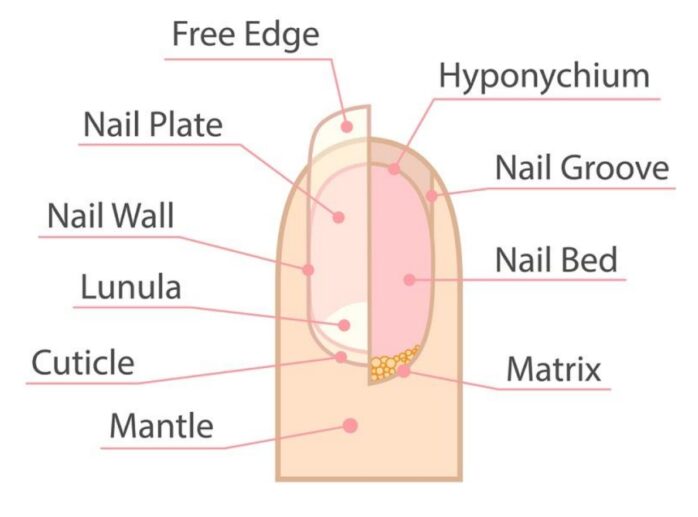
Our fingernails and toenails have multiple roles, including providing support for the fingers and toes, protecting the fingertips, and enhancing the appearance for example you can get the Dip Nails. But have you ever thought about the nail’s structure, how it grows, and what causes frequent nail problems such as breakage and discoloration? In this post, we will examine the nail’s anatomy in depth, including its many components, growth process, and maintenance advice.
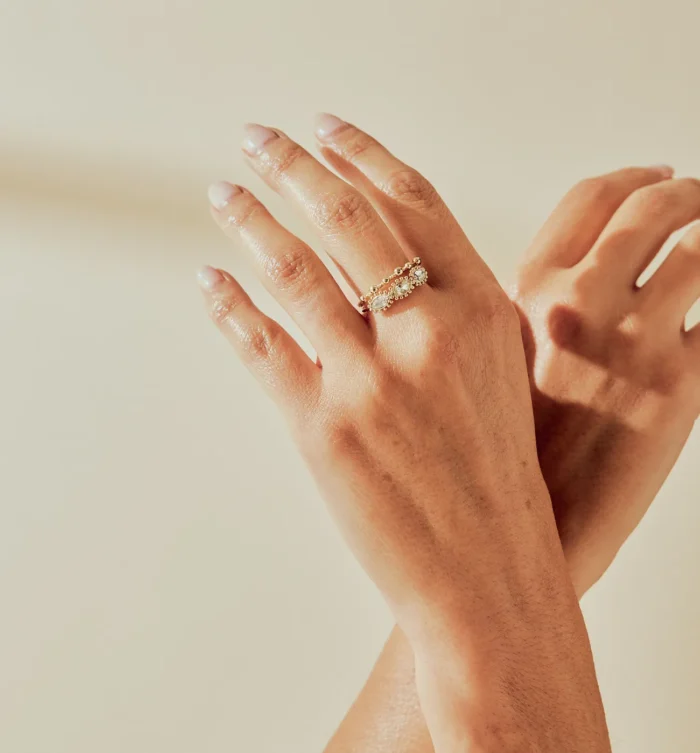
Composition of a Nail
A nail is constructed of multiple layers, each of which serves a specific purpose. The nail plate is the nail’s visible portion and extends past the fingertip. It is composed of many layers of keratinocytes, which are flattened, dead skin cells. These densely packed cells produce a tough, protective barrier that guards the underlying tissues from harm.
The nail bed is the pinkish or reddish region beneath the nail plate that is visible through the nail. The nail bed has numerous blood vessels and nerve endings, and it nourishes the nail plate, allowing it to develop and stay healthy.
The nail matrix is the region at the base of the nail that produces new nail cells. It is responsible for the nail plate’s development and thickness. The lunula is the crescent-shaped region visible on the surface of the nail plate at the base of the nail. It is the visible section of the nail matrix.
The nail fold is the surrounding skin that protects the nail plate from external harm. The eponychium is the thin strip of skin at the base of the nail, also known as the cuticle. It prevents the introduction of bacteria and other hazardous microbes by sealing the space between the nail plate and the nail fold.
Purpose of a Nail
Nails provide a number of essential roles in the body. They offer support and stability to the fingers and toes, enable humans to accomplish diverse tasks such as grabbing, typing, and walking. In addition to protecting the fingertips from harm, nails serve as a barrier against external damage.
In addition, our nails play a vital role in our general health. Changes in the look, texture, or color of our nails may indicate underlying health problems such as vitamin shortages, fungal infections, or circulation disorders.
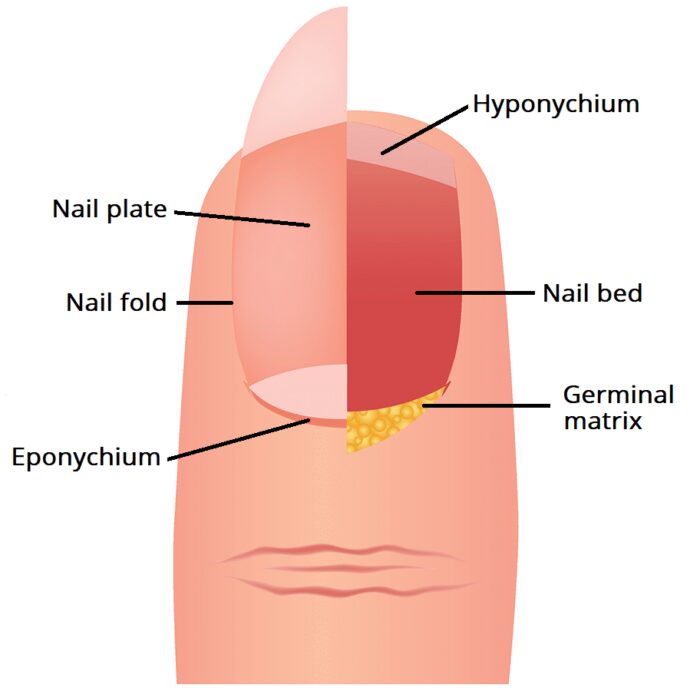
Development of a Nail
The growing of a nail is a continual and intricate process. At the base of the nail, the nail matrix is responsible for the growth and thickness of the nail plate. The matrix generates new nail cells, which propel the old nail plate ahead and cause it to grow.
The usual pace of nail growth is approximately 1 millimeter per week, though this might vary based on age, genetics, and general health. Nail development is typically slower in the elderly and those with poor circulation.
Preserving Healthy Nails
Here are some maintenance tips for healthy nails to prevent common nail disorders such as brittleness, breakage, and discolouration:
– Keep your nails clean and dry: To avoid the growth of germs and fungi, clean your nails regularly with soap and water and dry them well.
– Avoid hazardous substances: Exposure to harsh chemicals, such as cleaning solutions or nail paint remover, can weaken and make your nails more brittle.
– A diet rich in vitamins and minerals, such as biotin, vitamin E, and iron, can encourage healthy nail growth.
– Maintain your nail length: Trim your nails regularly can prevent them from breaking or ingrowing.
– Biting your nails can cause damage to the nail bed and make your nails more prone to infection.
– To prevent damage to your nails, wear gloves when performing home activities or working with harsh chemicals.
– Avoid using your nails as tools: Using your nails to open cans or boxes can cause them to break or get damaged.
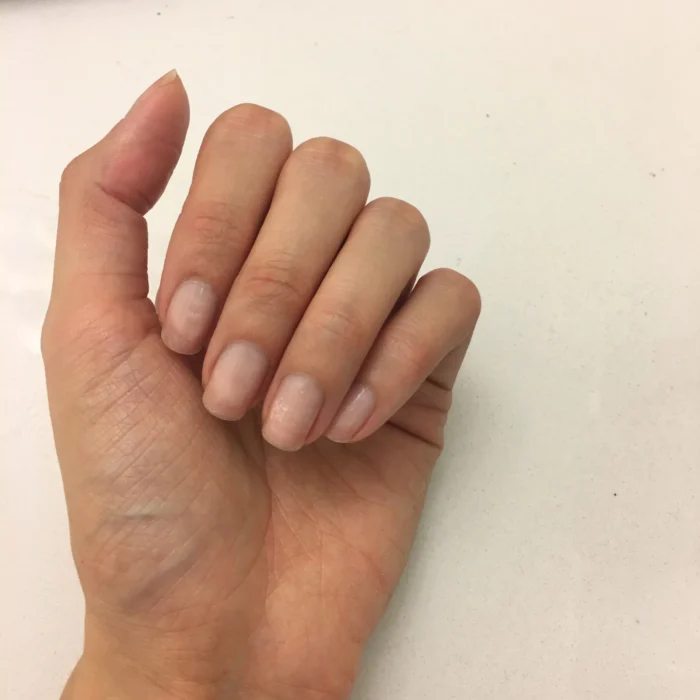
Common Nail Problems
Despite our best efforts, nails can still have difficulties. The following are frequent nail problems and their causes:
– Fungal infections are caused by the proliferation of fungus on and around the nail. They can cause discoloration, thickening, and brittleness of the nail.
-Ingrown toenails develop when the nail grows into the skin, producing discomfort, redness, and inflammation.
– Brittle nails are nails that are dry, fragile, and prone to breaking. Frequent exposure to water, harsh chemicals, or a deficiency in nutrition can cause them.
– White spots on the nails: White spots on the nails are a common problem that is frequently brought on by slight nail bed trauma. In most cases, they are harmless and will disappear on their own.
-Yellow nails may result from a fungal infection or extended contact with harsh chemicals, such as nail polish.
Nail biting and its effects on nail health
Nail biting, also known as onychophagia, is a common habit that can have negative effects on nail health. Constant biting of the nails can cause them to become weak, brittle, and jagged, making them more prone to breakage and infection. In addition, the constant moisture from saliva can lead to fungal infections around the nail bed. Nail biters are also at risk of developing paronychia, which is a bacterial infection that can cause redness, swelling, and pain around the nail. Furthermore, the bacteria from the mouth can be transferred to other parts of the body through nail biting, leading to potential infections. To maintain healthy nails, it is important to avoid nail biting and adopt healthy habits such as regular nail trimming and hand hygiene.
The nearest nail salon is the best place for you to get many useful nails services
In conclusion, nails play an essential part in life that have multiple roles. Knowing the structure of a nail, its growth cycle, and how to maintain healthy nails can aid in the prevention of common nail problems and the promotion of general health. The above tips will help you maintain strong, healthy and attractive nails. “Pick up your phone and download Maby, I’m sure you will have a very enjoyable and wonderful experience” – Mr Khoan Quang Vinh- the founder of this app said.

